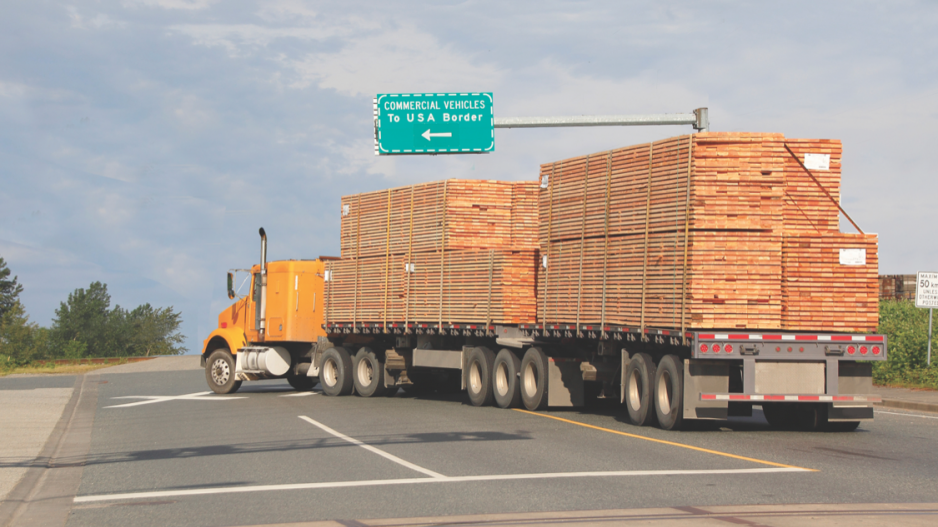If you have to drive in downtown Vancouver tomorrow, you may want to avoid East Hastings Street between Boundary Road and the Vancouver Convention Centre – it’s going to get congested.
Roughly 200 truck loggers plan to drive their rigs from the Interior of B.C. into Vancouver tomorrow, September 25, and meet up at the Vancouver Convention Centre, where the Union of BC Municipalities (UBCM) convention is being held.
Their mission is to show support for rural municipalities hit by sawmill closures and to confront provincial and federal politicians who might be there with demands for immediate reforms for B.C.’s forestry sector.
Roughly 200 truck loggers will leave Merritt around 10 a.m. and organizers expected to arrive in Vancouver around 2 p.m. They will have RCMP and Vancouver City Police escorts.
Most of the trucks will pass by the Vancouver Convention Centre, but about 10 will be staying, and organizers hope to meet with politicians attending the UBCM conference to lobby for reforms.
Their main goal is to get immediate changes to the way stumpage rates are set in B.C. They also appear to be lobbying for a return to some form of appurtenancy, which ties timber in a given region to specific sawmills or communities.
In a press release, the loggers say that stumpage rates in Alberta range from $4 to $8 per cubic metre, compared to about $55 per cubic metre in B.C. Several sawmills have closed or reduced shifts in recent months. All of the companies that have shuttered mills cite low lumber prices and high stumpage rates for the closures.
Stumpage rates (the price per log the province charges for timber cut on Crown land) are based, in part, on the prices companies pay at auction for logs through BC Timber Sales.
Until late 2018, logs were selling for a premium because of high demand and high prices for lumber in the U.S. Lumber prices have since fallen, but stumpage rates haven’t. Part of the problem is that there is simply a dwindling supply of timber.
There is a long lag before stumpage rates get adjusted, so current rates don’t actually reflect current market realities, convoy organizers say.
“I think what we saw in the Interior was about a $25 per metre, cubed, increase July 1 as a result of the auction bidding that occurred last year,” Jerry Canuel, a retired chief forester and convoy organizer, told Business in Vancouver. “We’re probably going to see exactly the same numbers this coming July of 2020.”
The system for setting stumpage rates is market-based. American lumber producers have already successfully lobbied for anti-dumping duties against Canadian softwood lumber. Tinkering with stumpage rates could result in even more allegations of unfair subsidization from the U.S., provincial forestry minister Doug Donaldson has argued.
“We are tired of hearing that point – that it will impact the SLA (Softwood Lumber Agreement),” Canuel said.
He said the current stumpage system is out of date and needs to be changed.
“They created this system when there really wasn’t a shortage of wood in the Interior,” Canuel said. “There was less competition for the wood. This to me…does not reflect anything that resembles the current market values that are out there right now.”
The loggers also want to see an end to the transfer of timber outside the region where it was cut. Communities with operating mills should be given first dibs on that timber before it can be transferred out of the timber supply area, they say. In other words, they are lobbying for a return to some form of appurtenancy, a system that was scrapped by the previous Liberal government in the early 2000s.




